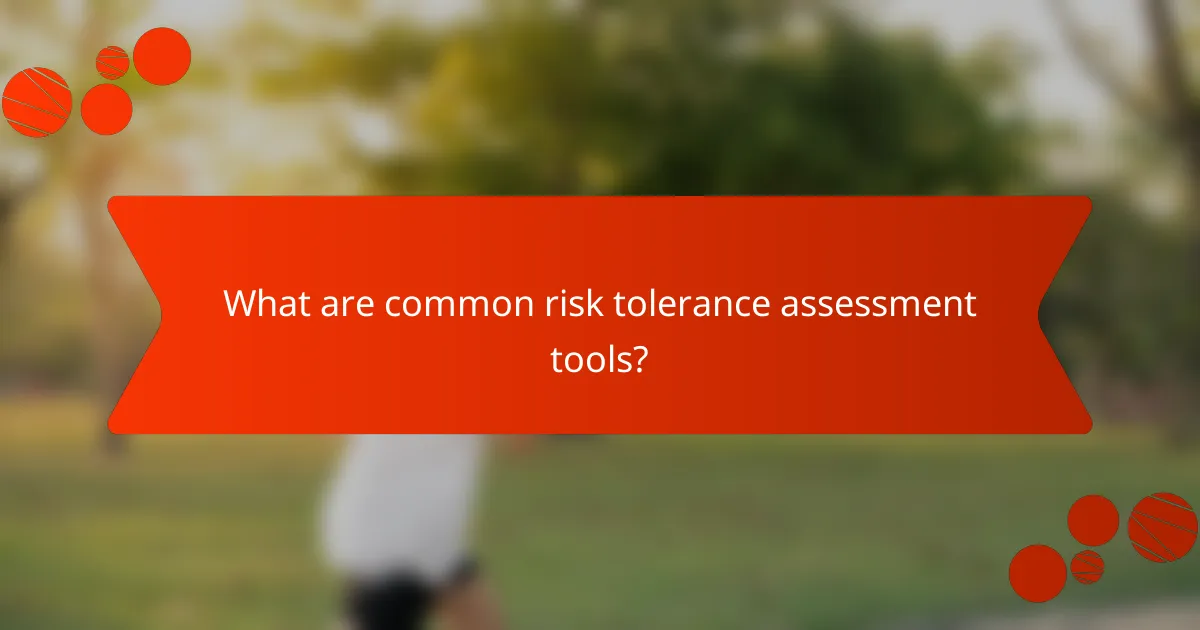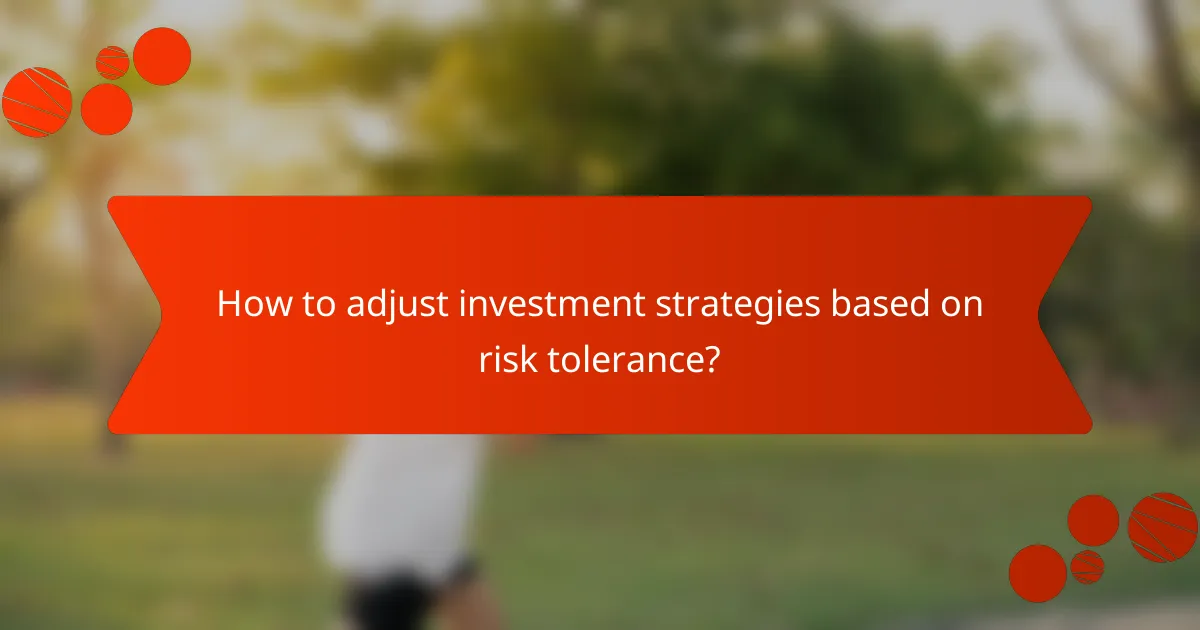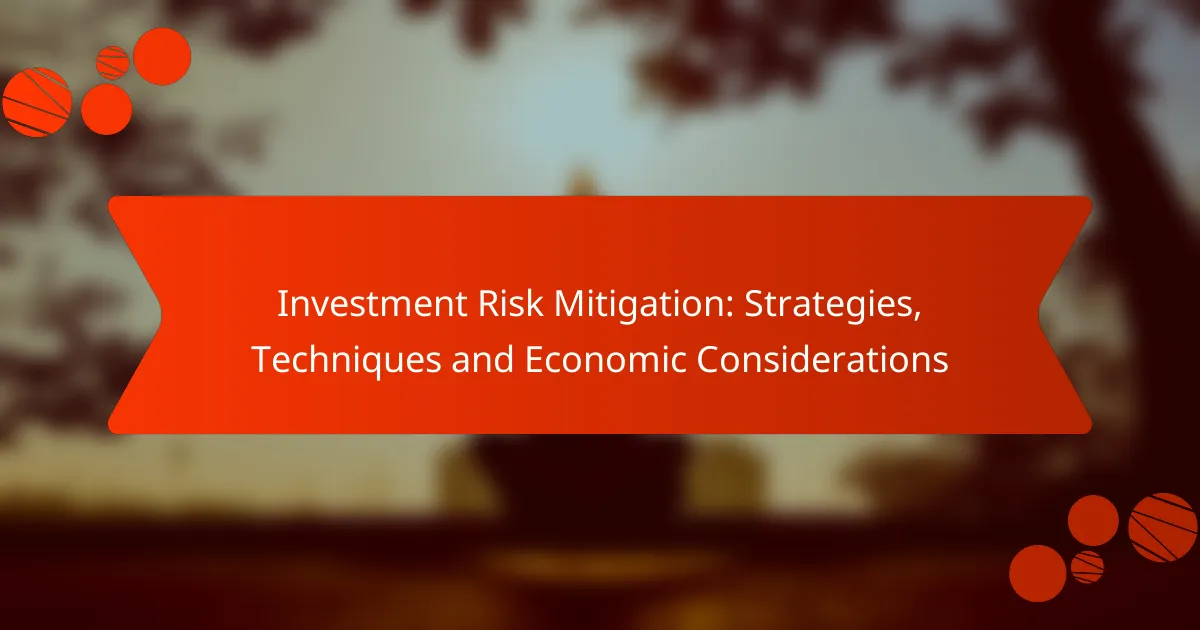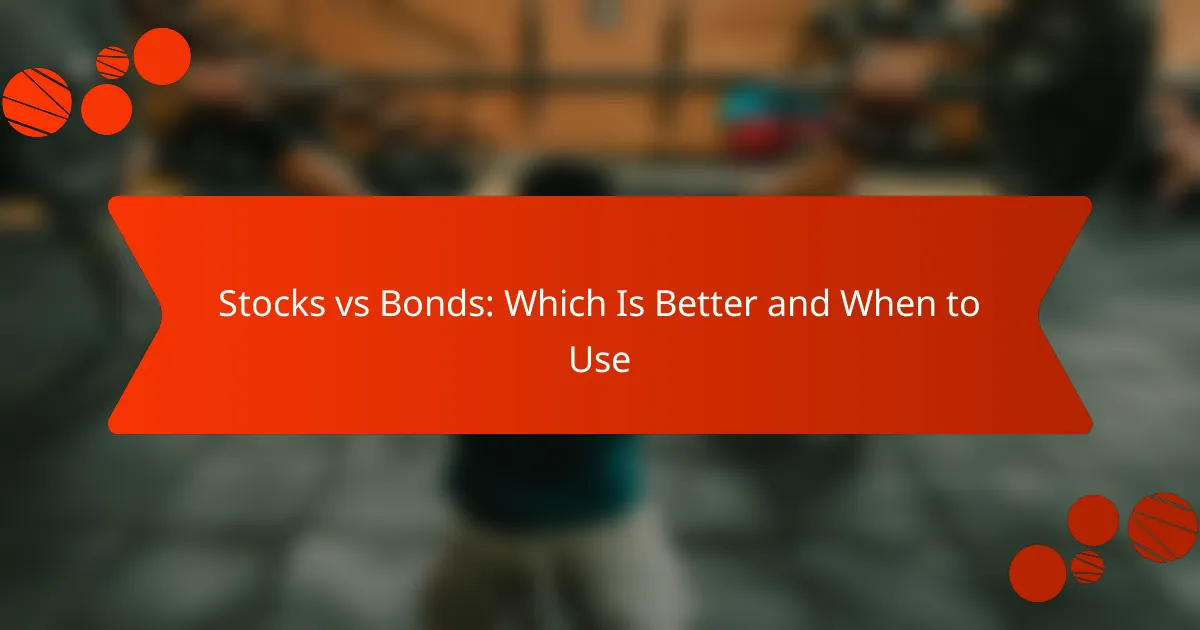Understanding investment risk tolerance is essential for aligning your portfolio with your financial goals and comfort level. This assessment considers various factors such as age, financial situation, and investment experience, which influence how much risk you are willing to accept. Utilizing common assessment tools, investors can evaluate their willingness and ability to take on risk, ensuring informed decision-making in their investment strategies.

How to assess investment risk tolerance?
Assessing investment risk tolerance involves understanding your capacity and willingness to take on risk in your investment portfolio. This evaluation helps determine the types of investments that align with your financial goals and comfort level.
Self-assessment questionnaires
Self-assessment questionnaires are tools designed to gauge your risk tolerance through a series of questions about your financial situation, investment goals, and emotional responses to market fluctuations. These questionnaires typically cover aspects such as your investment experience, time horizon, and how you would react to potential losses.
Many financial institutions and online platforms offer these questionnaires for free. Completing one can provide a quick snapshot of your risk profile, helping you make informed decisions about your investment strategy.
Professional financial advisor consultations
Consulting with a professional financial advisor is a personalized approach to assessing your investment risk tolerance. Advisors can provide insights based on their expertise and experience, helping you understand complex factors that influence your risk appetite.
During a consultation, an advisor will discuss your financial goals, current assets, and market conditions. This tailored advice can lead to a more accurate assessment than a generic questionnaire, ensuring your investment strategy aligns with your unique circumstances.
Risk tolerance calculators
Risk tolerance calculators are online tools that help you evaluate your risk profile by analyzing your responses to specific questions. These calculators often use algorithms to provide a risk score, which can guide your investment choices.
When using a risk tolerance calculator, consider factors such as your age, income, and financial obligations. While these tools can be useful, they should complement, not replace, professional advice or self-assessment questionnaires for a comprehensive understanding of your risk tolerance.

What factors influence investment risk tolerance?
Investment risk tolerance is shaped by various factors that determine how much risk an investor is willing to accept. Key influences include age, financial situation, income, and investment experience, each playing a crucial role in shaping an individual’s approach to risk.
Age and investment horizon
Age significantly impacts investment risk tolerance, as younger investors typically have a longer time horizon to recover from potential losses. For instance, a 30-year-old may afford to take on more risk compared to a 60-year-old who is nearing retirement.
As individuals age, their investment horizon shortens, often leading to a preference for lower-risk assets. A common strategy is to gradually shift from high-risk investments, like stocks, to more stable options, such as bonds, as one approaches retirement age.
Financial situation and income
An investor’s financial situation, including income level, savings, and debt, directly affects their risk tolerance. Those with higher disposable income and substantial savings may be more inclined to take risks, as they have a financial cushion to absorb potential losses.
Conversely, individuals with limited income or significant debt may prefer safer investments to protect their financial stability. It’s essential to evaluate one’s overall financial health and ensure that risk-taking aligns with personal financial goals.
Investment experience
Investment experience plays a crucial role in determining risk tolerance. Investors who have navigated market fluctuations and understand investment strategies are generally more comfortable with risk. They may be more willing to invest in volatile assets, knowing they can manage downturns.
On the other hand, novice investors might feel apprehensive about high-risk investments due to a lack of experience. Gaining knowledge through education and practice can help build confidence, allowing less experienced investors to gradually increase their risk tolerance over time.

What are common risk tolerance assessment tools?
Common risk tolerance assessment tools help investors evaluate their willingness and ability to take on investment risk. These tools typically use questionnaires and algorithms to gauge an individual’s financial situation, investment goals, and emotional responses to market fluctuations.
Riskalyze platform
The Riskalyze platform employs a unique approach by using a risk number to quantify an investor’s risk tolerance. Users answer a series of questions that assess their financial goals and emotional reactions to market volatility, resulting in a personalized risk score. This score helps align investment strategies with the investor’s comfort level.
One key feature of Riskalyze is its ability to simulate potential investment outcomes based on historical data, allowing investors to visualize how different risk levels might affect their portfolios. This can be particularly useful for making informed decisions about asset allocation.
Betterment risk assessment
Betterment offers a straightforward risk assessment tool that guides users through a series of questions about their investment goals, time horizon, and risk preferences. Based on the responses, Betterment recommends a diversified portfolio tailored to the individual’s risk tolerance.
This platform also provides ongoing portfolio management and adjustments based on market conditions and changes in the investor’s circumstances. Users can easily monitor their investments and make adjustments as needed, ensuring their portfolio remains aligned with their risk profile.
Morningstar risk evaluation
Morningstar’s risk evaluation tools focus on analyzing mutual funds and ETFs to assess their risk relative to their performance. Investors can use these tools to compare different investment options based on risk metrics such as standard deviation and beta.
By utilizing Morningstar’s extensive database, investors can gain insights into how specific investments have performed under various market conditions. This information helps in making informed decisions about which funds align with their risk tolerance and overall investment strategy.

How does risk tolerance vary by region?
Risk tolerance can differ significantly across regions due to cultural, economic, and regulatory factors. Understanding these variations is crucial for investors looking to align their strategies with regional behaviors and preferences.
Investment behavior in North America
In North America, particularly the United States and Canada, investors tend to exhibit a higher risk tolerance compared to other regions. This is often attributed to a strong culture of entrepreneurship and a robust financial market that encourages innovation and investment in higher-risk assets.
Many North American investors are comfortable with stock market volatility, often seeking growth through equities and alternative investments. However, it’s essential to recognize that individual risk tolerance can vary widely, influenced by personal financial situations and investment goals.
Investment behavior in Europe
European investors generally display a more conservative approach to risk compared to their North American counterparts. This cautious behavior is influenced by a history of economic instability and varying regulatory environments across countries.
In countries like Germany and Switzerland, investors often prefer fixed-income securities and real estate over equities. Understanding local economic conditions and regulatory frameworks is vital for tailoring investment strategies in Europe.
Investment behavior in Asia
Asia presents a diverse landscape for investment behavior, with significant differences between countries. For instance, investors in Japan tend to be risk-averse, favoring stable investments, while those in emerging markets like India may exhibit a higher risk appetite driven by rapid economic growth.
Furthermore, cultural factors play a significant role in shaping risk tolerance across Asia. Investors should consider local market dynamics and historical performance when assessing their risk tolerance in this region.

What are the consequences of misjudging risk tolerance?
Misjudging risk tolerance can lead to significant financial setbacks and emotional distress. When investors do not accurately assess their comfort with risk, they may face unexpected losses and make decisions that do not align with their financial goals.
Increased financial losses
Investors who misjudge their risk tolerance may take on more risk than they can handle, leading to substantial financial losses. For example, an individual who believes they can endure high volatility might invest heavily in stocks, only to panic during a market downturn and sell at a loss. This misalignment can erode capital and hinder long-term growth.
To avoid this pitfall, investors should regularly reassess their risk tolerance, especially after major life changes or market shifts. Understanding personal financial situations and setting realistic expectations can help mitigate potential losses.
Poor investment decisions
Misjudging risk tolerance often results in poor investment choices that do not align with an investor’s goals or financial situation. For instance, a conservative investor might be tempted to invest in high-risk assets after a market boom, leading to decisions that could jeopardize their financial stability.
To make informed choices, investors should create a diversified portfolio that reflects their true risk appetite. Utilizing tools like risk assessment questionnaires can provide clarity and guide better investment strategies.
Emotional stress and anxiety
Investors who misjudge their risk tolerance frequently experience heightened emotional stress and anxiety. The fear of losing money can lead to second-guessing decisions and constant worry about market fluctuations. This emotional turmoil can cloud judgment and lead to impulsive actions, such as panic selling.
To manage stress, investors should develop a clear investment plan that aligns with their risk tolerance. Regularly reviewing and adjusting this plan can help maintain confidence and reduce anxiety during market volatility.

How to adjust investment strategies based on risk tolerance?
Adjusting investment strategies based on risk tolerance involves aligning your portfolio with your comfort level regarding potential losses. This means selecting investments that match your ability to withstand market fluctuations while aiming for your financial goals.
Diversification of portfolio
Diversification is a key strategy for managing risk in your investment portfolio. By spreading investments across various asset classes, such as stocks, bonds, and real estate, you can reduce the impact of a poor-performing asset on your overall portfolio.
Consider allocating your investments in a way that reflects your risk tolerance. For example, conservative investors might favor a mix of 60% bonds and 40% stocks, while aggressive investors may opt for a 70% stock and 30% bond allocation. Adjust these ratios based on your comfort with market volatility.
Regularly review and rebalance your portfolio to maintain your desired level of diversification. This can involve selling off assets that have grown to represent a larger portion of your portfolio and reinvesting in underrepresented areas, ensuring alignment with your risk tolerance and investment goals.



